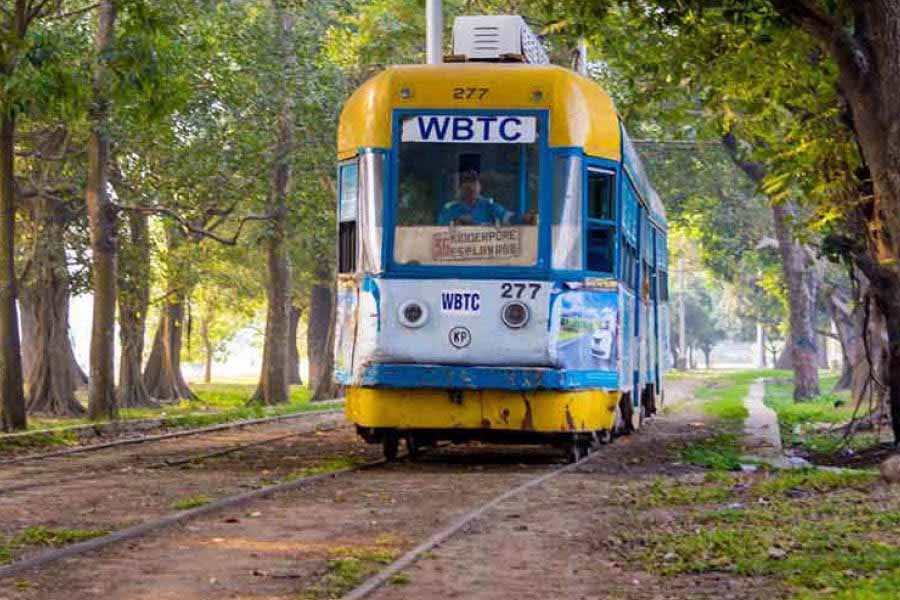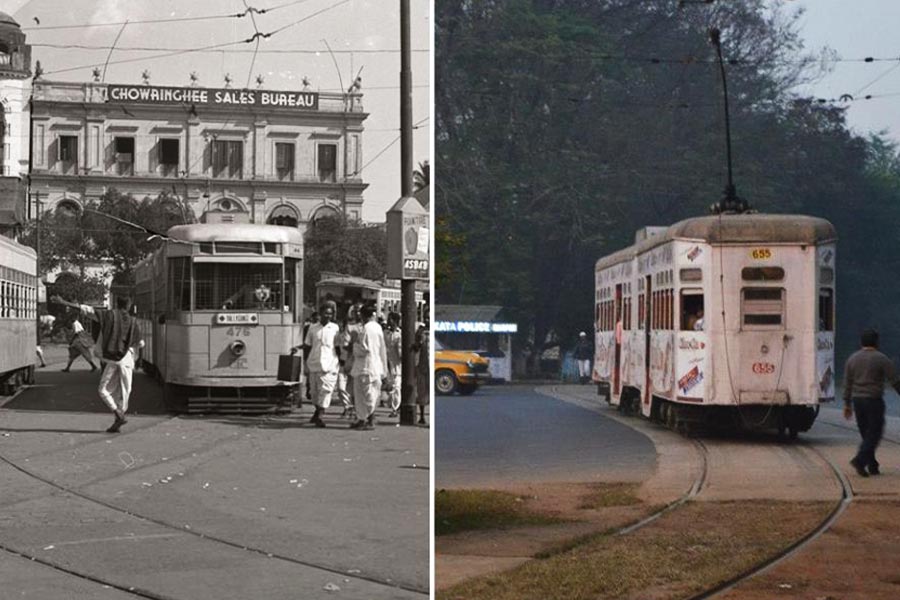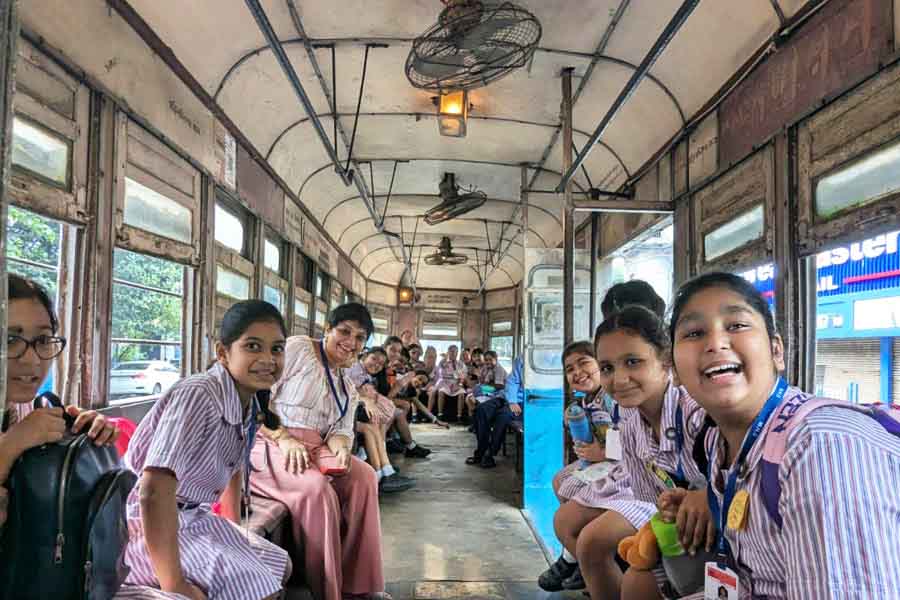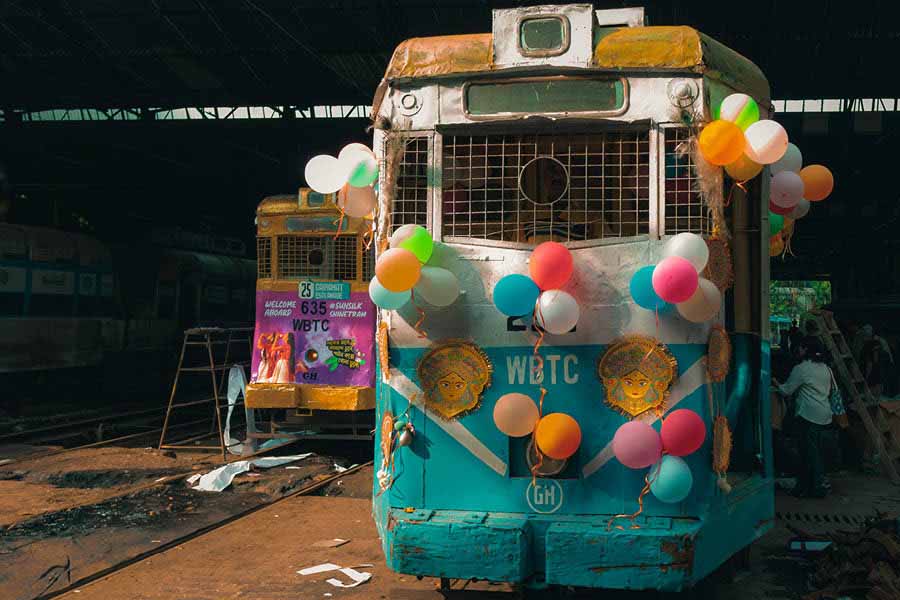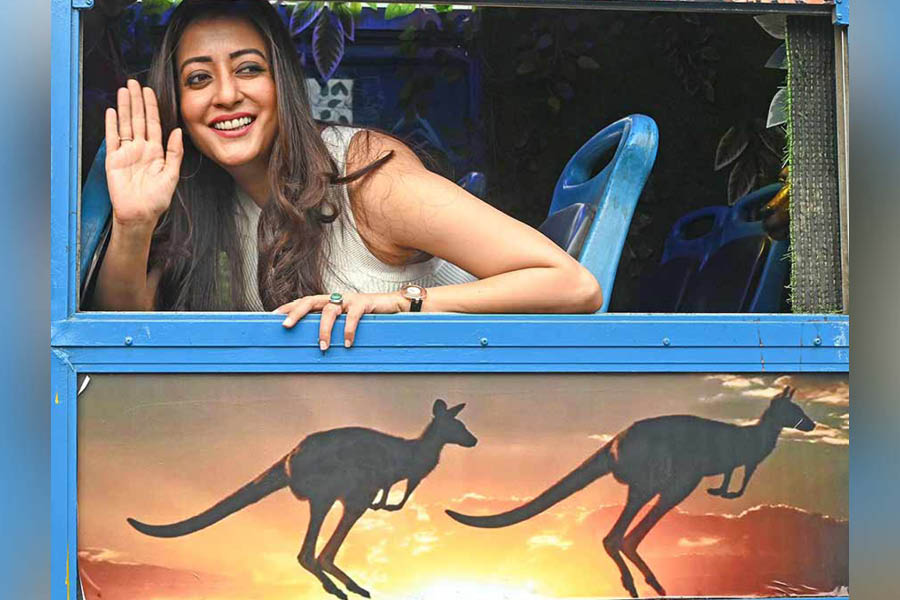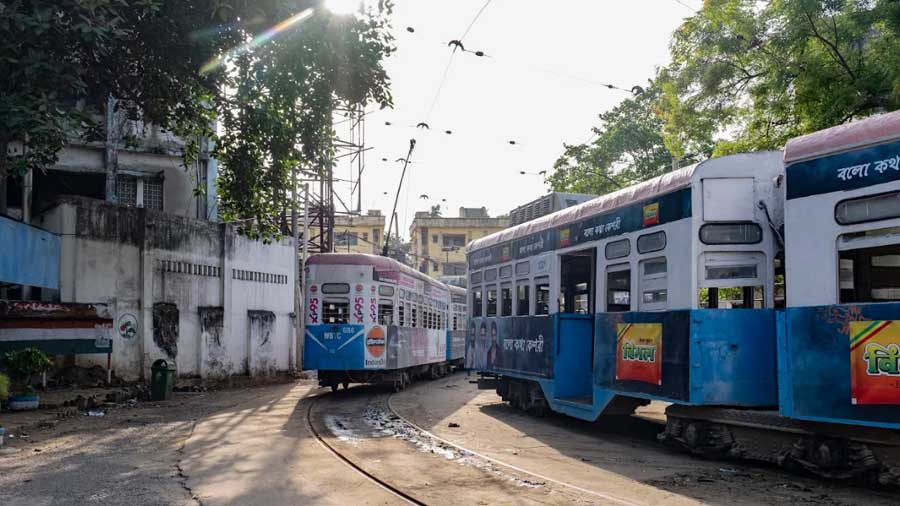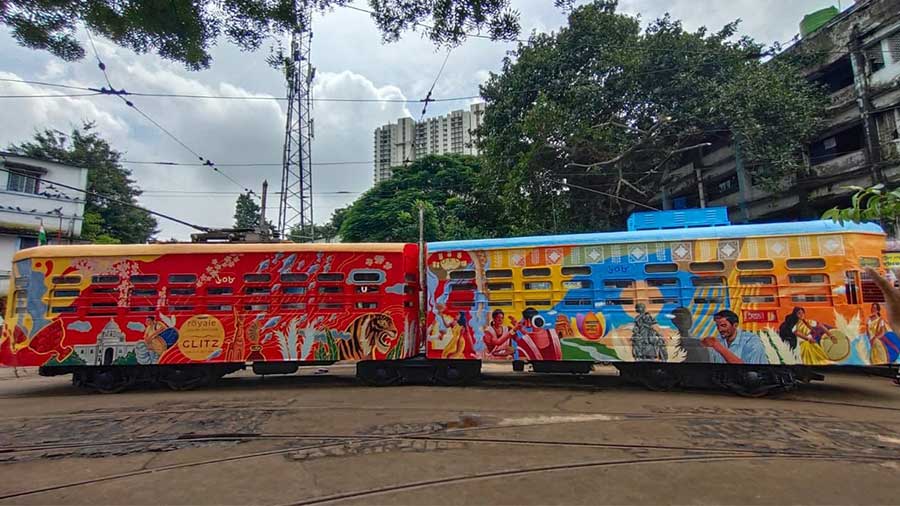One autumn morning, the Nimtala burning ghat was thronged with mourners. The air was heavy, saturated with teardrops and the smell of burnt flesh. The sound of wailing did kola-kuli with the black smoke belching out of electric furnaces. If Shakespeare had lived, he would have approved of this ghoulish backdrop — just perfect for the witches in Macbeth to pop up. All this hullabaloo — rudali cries, chest-beating, “amar rahega” chants — befitted the severity of the loss; after all, it was the cremation of an 122-year-old Kolkatan, the electric tram.
“It was perhaps destined for the electric tram to turn to ashes in an electric furnace,” observed a mourner, wearing a tram conductor’s bag across his shoulders. The final journey, inside the fire-spitting mouth of the furnace, was a routine affair for the lifeless two-coach carriage. It was like entering a tram shed after completing a defined route — Shyambazar-Esplanade-Shyambazar. The deceased was mounted on tramline-like rails and pushed inside by democratically elected representatives. There was a brief commotion, though. While entering the furnace, the overhead trolley pole (colloquially called tram-er teeki) failed to bend and enter the fire pit; hence, like an obdurate bone, it had to be broken into two parts by a bamboo pole.
It would usually take 45 minutes for a human body to turn into ashes; for the tram, it barely took 10. Another mourner claimed that years of neglect, humiliation, and apathy had emptied out its soul and body, the reason why it took so little time to be incinerated.
Kite-trap, hangout, vehicle, inspiration
The next day, a few steps away from the empty tram shed, at the five-point crossing, under the statue of a horse-seated revolutionary, a ‘Swaran Sabha’ or ‘the celebration of amader tram’ was organised. Mourners of different hues and shapes gathered to grieve. Some came with bagfuls of hindsight biases like “I knew it all along” and “Didn’t I tell you?” Others came to pour their hearts out and share their secret tram anecdotes. Yet another belligerent group came to throw, much like Frisbees, slogans in the air.
The first to grab the megaphone was 12-year-old Amalendu, who would take a tram to his school on College Street. As a symbolic gesture of immersing the tram’s ashes, Amalendu held his school bag high and turned it upside down. A collective gasp filled the autumn air as tram tickets rained down from the unzipped bag. Buoyed up by a gust of wind, the tickets swirled around the horse’s nostrils and caressed its cheeks before dropping on yet-to-be-yanked-out tramlines.
Amalendu spoke about his love-hate relationship with trams. He hated their overhead electric wires. For him, they were scaffoldings from which kites were hanged during Vishwakarma Puja. Every time he flew his beloved ghuris from his terrace across the tramlines, Amalendu’s kites were trapped by the overhead wires. He waxed eloquent about what he loved about trams too: ringing the tram bell! Ignoring the tram conductor’s displeasure, he sprang up to pull the string attached to the bell — one ting told the driver to stop, and two (ting-ting) to move.
Next on the dais were Nabonita and Utpal. They recalled the tram being their favourite dating spot and shared stories of kissing inside empty trams, hawkers selling chatni lozenges, and never-ending rides across the rain-soaked Maidan. “Good they died! I loved them so much that it was becoming hard to see them suffer,” lamented Upal. Nabonita added: “The slow trams were becoming anachronistic; misfits in a world addicted to fast life.”
Mathura Yadav, who sold ghugni at the five-point crossing, reluctantly raised his hand, and the megaphone was handed over to him. Mathura smiled and introduced trams to the audience as a poor migrant’s chariot. With a few paise in his pocket, travelling in ceiling-fan-stripped, muggy, subsidised second-class coaches, Mathura would discover the wonders of Kalkatta.
Soon, many voices joined in to make the sabha a cacophonous affair. Debu, a Puja organiser, initially bemoaned the city’s loss, but suddenly called trams a good riddance, like a political turncoat. The gathered mourners learned that Debu always had problems transporting his para’s towering Durga idol. The tram wires would either amputate Durga’s hands or her bejewelled crown.
Wrecked by arthritis, 70-year-old Nilotpal Bose spoke about his irreparable loss. Trams had low footboards that helped the disabled like him to board and alight with ease. A young poet with a Carlos Valderrama hairdo read out the poems he wrote sitting next to the window opening into the tram driver’s cabin. As the city’s streets slowly passed him, his pen scooped up words from the sea of colours, smell, and sound.
Life and afterlife
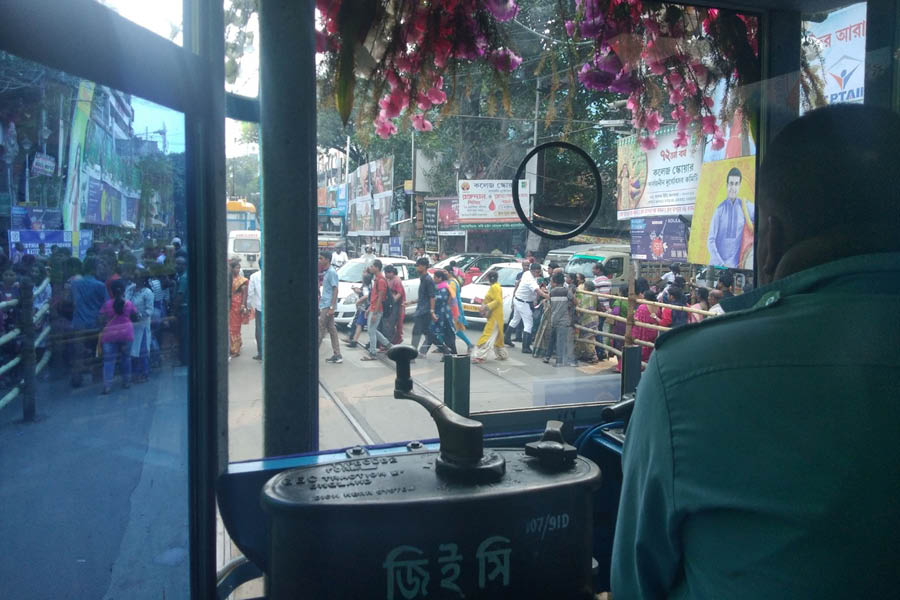
A snap from the driver’s cabin of a tram on the Esplanade-Shyambazar-Esplanade route as it trundles down College Street during Durga Puja in 2019 Anujit Mitter
A sudden jerk brought my ‘swaran sabha’ dream to an end. I woke up bemused and sweating like an artery-clogged biryani addict. I looked around and found the tram’s conductor sitting a few seats away. He smiled at me and said: “Eyi current elo! Ekhon tram cholbe.” (The power is back; now the tram will restart.) I finally recollected what had happened. A power outage had stalled the tram, and I dozed off while reading Venki Ramakrishnan’s book Why We Die. With so much talk and chit chat happening around the discontinuation of trams, my dream about the death of trams made total sense. I reread the page I was absorbed in before nodding off: “Hindus and Buddhists gladly embrace… the idea that each person has an immortal soul that lives on after death by being reincarnated in a new body, even in a completely different species.”
The words of the Nobel Prize-winning biologist slowly fell into place. From the window of my electric tram, I saw electric cars, e-scooters, and even e-cycles milling around. Perhaps they were the reincarnated souls of long-dead, disused electric trams. That day, I was convinced that trams would never die. The reason was obvious: The tram was an idea that was conceived ahead of its time, and ideas like souls, never die — they live on forever.
